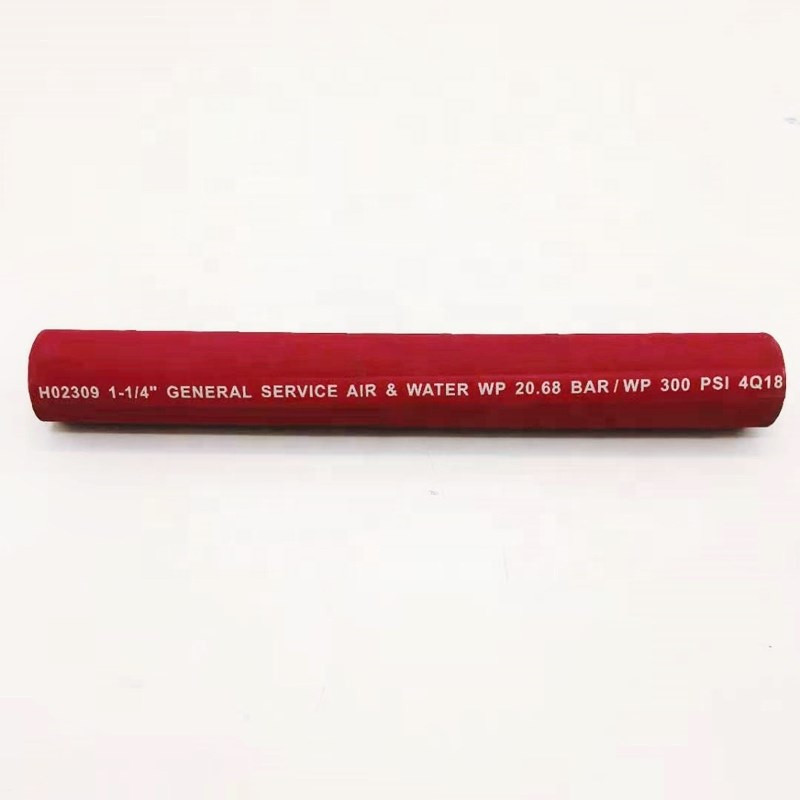335345435
Dec . 03, 2024 16:35 Back to list
Hydraulic Hose Pipe Specifications and Standards for Industrial Applications
Understanding Hydraulic Hose Pipe Specifications
Hydraulic hose pipes are essential components in various industrial applications, providing flexibility and reliability in fluid transportation. The specifications of these hoses play a crucial role in ensuring safety, efficiency, and longevity in performance. This article will delve into the critical aspects of hydraulic hose pipe specifications, covering materials, dimensions, pressure ratings, and applications.
1. Materials and Construction
Hydraulic hoses are primarily constructed from synthetic rubber or thermoplastic materials. The choice of material significantly influences the hose's performance characteristics, such as flexibility, temperature tolerance, and resistance to various fluids. For instance, synthetic rubber hoses are often preferred for their resilience against oil and fuel, while thermoplastic hoses tend to be lighter and offer excellent resistance to abrasion.
The construction of hydraulic hoses typically involves several layers. The inner layer is designed to carry hydraulic fluid, while the outer layer provides protection against environmental factors such as heat, chemicals, and abrasions. Additionally, reinforcement layers, usually made of steel wire braiding or spiral wraps, are integrated to enhance pressure handling capabilities.
2. Dimensions and Fittings
Hydraulic hoses are available in various diameters and lengths, allowing for compatibility with different systems and machinery. The inner diameter is a significant factor affecting fluid flow and pressure loss. Common standard sizes include nominal diameters ranging from 1/8 inch to several inches.
Hoses are often supplied with fittings that are compatible with hydraulic systems. These fittings come in various forms, such as threaded fittings, quick disconnects, and flanges, each designed for specific applications. Proper fitting selection is crucial to prevent leaks and ensure a secure connection between components.
3. Pressure Ratings
One of the most critical specifications for hydraulic hoses is their pressure rating, which indicates the maximum operating pressure the hose can withstand
. Pressure ratings are usually categorized into three classes working pressure, burst pressure, and impulse pressure.- Working Pressure This is the maximum pressure that a hose can handle during normal operation. It is essential to select a hose with a working pressure that exceeds the maximum pressure encountered in the hydraulic system. A common rule of thumb is to select a hose with a working pressure that is at least 1.5 times the anticipated maximum operating pressure.
hydraulic hose pipe specification pdf

- Burst Pressure This represents the maximum pressure the hose can withstand before failing. It’s significantly higher than the working pressure, and manufacturers usually test hoses to ensure they can handle this extreme condition.
- Impulse Pressure This specification refers to the hose's ability to withstand repeated cycles of high-pressure surges over its lifespan. It's crucial for applications where pressure fluctuations are frequent.
4. Temperature Ratings
Temperature ratings are another vital aspect of hydraulic hose specifications. Hoses must be capable of handling the temperatures of the fluids they transport. Generally, hoses are rated for minimum and maximum operating temperatures, which are crucial to prevent degradation of the hose material and ensure safety.
Most hydraulic hoses can operate within a temperature range of -40°F to 212°F (-40°C to 100°C), though high-temperature models can withstand temperatures exceeding 250°F (121°C).
5. Applications and Compliance
The specifications of hydraulic hoses dictate their applications in various industries, including construction, agriculture, manufacturing, and automotive. Each application may have specific requirements, such as resistance to chemicals, abrasion, or high temperatures, which must be considered when selecting a hose.
Additionally, compliance with industry standards, such as SAE (Society of Automotive Engineers) and ISO (International Organization for Standardization) specifications, is crucial. These standards ensure that hoses meet safety and performance benchmarks, thus protecting operators and equipment.
Conclusion
Understanding hydraulic hose pipe specifications is vital for selecting the right hose for any application. By considering materials, dimensions, pressure ratings, temperature tolerances, and compliance with industry standards, one can ensure the efficient and safe operation of hydraulic systems. Proper selection and maintenance of hydraulic hoses can greatly enhance the reliability and longevity of machinery, ultimately leading to improved productivity and reduced costs.
-
SAE 100 R17 Black Smooth Cover Hydraulic Hose
NewsMar.07,2025
-
SAE 100 R17 Black Smooth Cover Hydraulic Hose
NewsMar.07,2025
-
SAE 100 R17 Black Smooth Cover Hydraulic Hose
NewsMar.07,2025
-
SAE 100 R17 Black Smooth Cover Hydraulic Hose
NewsMar.07,2025
-
SAE 100 R17 Black Smooth Cover Hydraulic Hose
NewsMar.07,2025
-
steel wire braided hydraulic hose
NewsMar.07,2025



